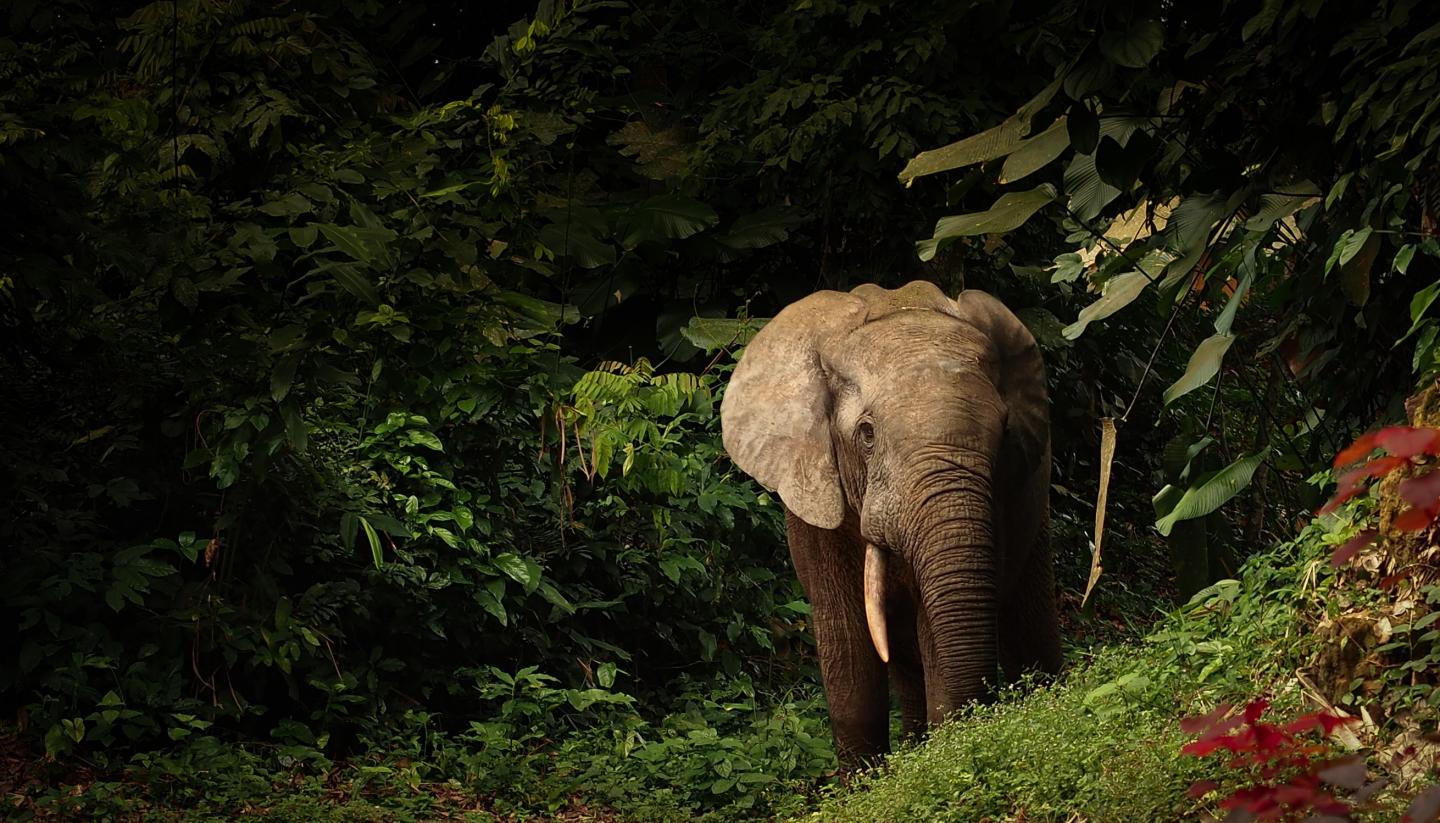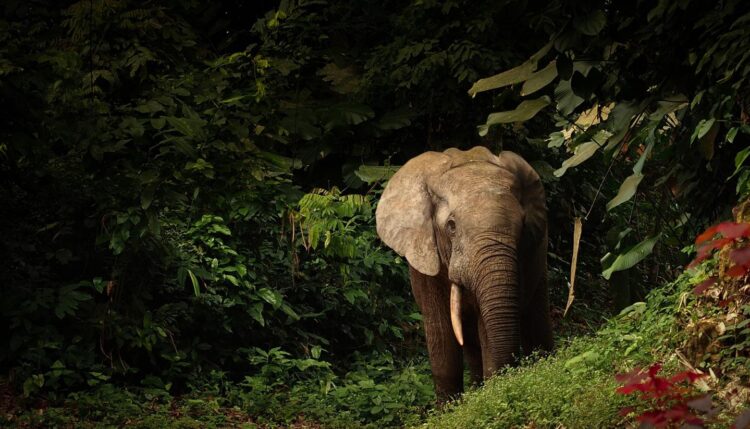Sites in Democratic Republic of Congo, Republic of Congo, Gabon, Cameroon and Equatorial Guinea identified

Credit: Forrest Hogg/WCS
BYRON BAY, Australia (August 11, 2020) – A study by WCS and partners produced new analyses to pinpoint the most important forests for biodiversity conservation remaining in Central Africa. The results highlight the importance of the Democratic Republic of Congo (DRC), northern Republic of Congo, and much of Gabon as the most important countries in Central Africa for safeguarding biodiversity and intact forests.
The study combines new datasets on forests to identify where the most intact forests remain across this vast area with previous work that identified strongholds for bonobos, forest elephants, gorillas, and chimpanzees across the region. The results reveal that the Democratic Republic of Congo has the largest amount of priority areas in the region, containing more than half, followed by Gabon, the Republic of Congo, and Cameroon. Specific regions include: the Salonga area and East-central DRC; northern Republic of Congo; extensive areas in Gabon including Crystal Mountains (Monts de Cristal) and Chaillu Mountains (Monts de Chaillu), areas along the coast, and the north-east.
The authors compared their approach to one that solely prioritizes forest intactness based on a forest fragmentation and degradation model, and models of human pressures on the forest, to one that aims to achieve only biodiversity representation objectives, and one that combines them all. They found that when priorities are only based on forest intactness without considering biodiversity representation, there are significantly fewer biodiversity benefits and vice versa.
The study’s lead author, Dr. Hedley Grantham, WCS Director of Conservation Planning, said: “This study shows that just prioritizing forests based on their condition will trade-off biodiversity representation benefits, and vice versa will miss locations for preserving the remaining intact forests important for many species in an increasingly human-dominated world. Our approach can inform various types of conservation strategies, including land-use planning, carbon payments, protected area expansion, community forest management, and forest concession plans.”
The forests of Central Africa contain some of Earth’s few remaining intact forests. These forests are increasingly threatened by infrastructure development, agriculture, and unsustainable extraction of natural resources (e.g., minerals, bushmeat, and timber), all of which is leading to deforestation and forest degradation, particularly defaunation, and hence causing declines in biodiversity and a significant increase in carbon emissions.
Co-author WCS Conservation Scientist Fiona “Boo” Maisels said: “By highlighting areas of high importance for biodiversity and forest intactness, our analysis can guide national infrastructure and agricultural development plans to the areas of low conservation value, thus simultaneously enabling sustainable development and sound conservation stewardship”
Olivia Rickenbach led the development of guidelines on High Conservation Value (HCV) identification and management for Forest Stewardship Council (FSC) certified forest management in the Congo Basin. She notes: “FSC initiated and coordinated the collaboration that produced this analysis. It was sparked by the lack of readily available data and decision-making tools which could identify the most important zones for biodiversity conservation at a landscape level. The analysis was also needed due to the regional critique of IFLs (Intact Forest Landscapes) as indicators to define such areas. Draft HCV guidelines were approved in November 2019 by the regional working group supervising this task; they now propose this method and data to identify HCV 2 areas.”
###
The study is published in the journal Environmental Research Letters as a partnership between the Wildlife Conservation Society, the World Wide Fund for Nature, the World Resources Institute, Key Biodiversity Areas Secretariat, CIRAD – a French agriculture and research organization, the Forest Stewardship Council (FSC), and four Universities from France, the UK, and Australia.
WCS is a member of Forests for Life, a partnership committed to working with governments, Indigenous Peoples, civil society and the private sector to halt and reverse forest degradation across 1 billion hectares of intact forests worldwide.
The study was funded by the Forest Stewardship Council, WCS, and WWF.
WCS (Wildlife Conservation Society)
MISSION: WCS saves wildlife and wild places worldwide through science, conservation action, education, and inspiring people to value nature. To achieve our mission, WCS, based at the Bronx Zoo, harnesses the power of its Global Conservation Program in nearly 60 nations and in all the world’s oceans and its five wildlife parks in New York City, visited by 4 million people annually. WCS combines its expertise in the field, zoos, and aquarium to achieve its conservation mission. Visit: newsroom.wcs.org Follow: @WCSNewsroom. For more information: 347-840-1242.
Media Contact
Stephen Sautner
[email protected]
Original Source
https:/
Related Journal Article
http://dx.





